Herbs and spices are a real win-win when it comes to eating healthier while enjoying what you eat. Studies show taste is ultimately the key factor driving our typical food choices. So, making healthful foods taste great is important. Herbs and spices can help you reduce the amount of salt you add to dishes while making nutritious foods like vegetables, whole grains and fish more flavorful.
Currently, 33% of adults in the US have hypertension (high blood pressure), which is a significant risk factor for heart disease and stroke. Reducing salt (sodium) intake is an important way to decrease risk of hypertension. Curbing your salt tooth also can help lower blood pressure if you already have prehypertension (borderline high blood pressure) or hypertension.
Processed, packaged foods and restaurant foods are the biggest sources of sodium in our diets, so limiting those is important. Knowing how to flavor foods with herbs and spices could help you enjoy home cooking more. “People have become very accustomed to the taste of salt,” says Nicola McKeown, PhD, an associate professor at Tufts’ Friedman School. “Introducing herbs and spices while gradually cutting back on salt may make it easier to reduce sodium in your diet.” If you’ve been uncertain how to use herbs and spices, it’s never too late to learn.
Herbs Versus Spices:
Although it’s common to consider herbs and spices as a single category of seasonings, they are a bit different. Herbs are from the leafy part of plants with non-woody stems, like parsley, rosemary, thyme, dill, basil, mint and oregano. Such herbs may be sold fresh or dried and are typically used in larger amounts than spices.
Spices are more commonly sold dried, either whole or ground, and tend to have a stronger flavor than herbs. Spices are from various parts of either woody or non-woody plants, as in these examples:
– Root-like stems (rhizomes): ginger, turmeric
– Flower buds: capers, cloves
– Flower stigmas: saffron
– Fruits (berries): peppercorns, allspice
– Seeds: cardamom, cumin
– Bark: cinnamon
In addition to these common herbs and spices, there also are plants that may be thought of as vegetables but are often used for seasoning. Garlic, onions, celery and chili peppers are a few examples. Regardless of their classification, all of these are great options for flavoring foods.
Flavor Enhancers:
Although sprinkling on salt is an easy way to boost the flavor of many dishes, herbs and spices can be just as effective (if not more so). In one experiment, described in the journal Appetite, when adults were given a reduced-sodium (about 45% less salt) tomato soup seasoned with a mixture of herbs and spices, they perceived it to be similar in saltiness to the regular version of the soup higher in sodium. The people didn’t instantly like the lower-salt, herb-seasoned soup as much as the salty version, but they grew to like it more over a short period of time. So, be patient as your taste buds adapt.
Some of the real magic with herbs and spices happens when you use them to make a healthy food like broccoli so tasty that you eat more of it. That’s what was found in a preliminary study from the University of California in Los Angeles. Scientists asked twenty overweight men and women who typically ate less than three daily servings of vegetables to do a series of taste tests with vegetables, without disclosing how they were seasoned.
When the people were given cooked broccoli seasoned with an herb/spice mixture (garlic, onion, pepper and basil, along with extra-virgin olive oil and a bit of salt), they ate significantly more broccoli compared to when it was only flavored with olive oil and salt. In fact, high-restraint eaters (those who restrict food intake to control weight) consumed 91% more broccoli when it was seasoned with the herb/spice mix. The study was recently published in the journal Food and Nutrition Sciences.
Fresh To Dried Herbs
The following amounts of herbs in different forms are generally equivalent to each other:
– 1/2 teaspoon ground, dried herbs
– 1 teaspoon crumbled, dried herbs
– 1 tablespoon finely cut, fresh herbs
Note: 1 tablespoon = 3 teaspoons
Health Impact:
Do herbs and spices have health benefits beyond their ability to help you cut back on salt? As a group, herbs and spices contain more than 2,000 different phytochemicals. One group of phytochemicals that predominates in herbs and spices is polyphenols, which may have anti-inflammatory, anti-cancer and other potential beneficial health effects.
Drying an herb or spice concentrates the polyphenols. Even so, you’ll generally only get a small amount of polyphenols from a single herb or spice in a dish (because so little is typically used for seasoning) compared to the amount you’d get in a polyphenol-rich vegetable or fruit, like broccoli or blueberries. So, consider the polyphenols and other phytochemicals in herbs and spices a complement to your dietary intake rather than a primary source of them.
Although the phytochemicals in most herbs and spices may not contribute significantly to your overall intake, they may have some beneficial effects on foods in the cooking process. For example, in a preliminary study, an herb/spice seasoning mixed into lean ground meat reduced the formation of an inflammatory compound and potential carcinogen (malondialdehyde) in grilled burgers by 71% compared to a plain burger.
The seasoning used in the burgers included black pepper, cloves, cinnamon, garlic powder, ginger, oregano, paprika and rosemary. About 2 teaspoons of the seasoning was mixed into each 4-ounce burger. (If trying this approach, you may want to start with less seasoning to see if you like it.) The study appears in the American Journal of Clinical Nutrition.
Expanding Your Spice Cabinet:
Although you can’t beat the flavor of fresh herbs, it’s good to keep some commonly-used dried herbs and spices on hand. Patsy Jamieson, the Health & Nutrition Letter’s recipe editor, suggests a few key dried herbs and spices to start with and how to use them:
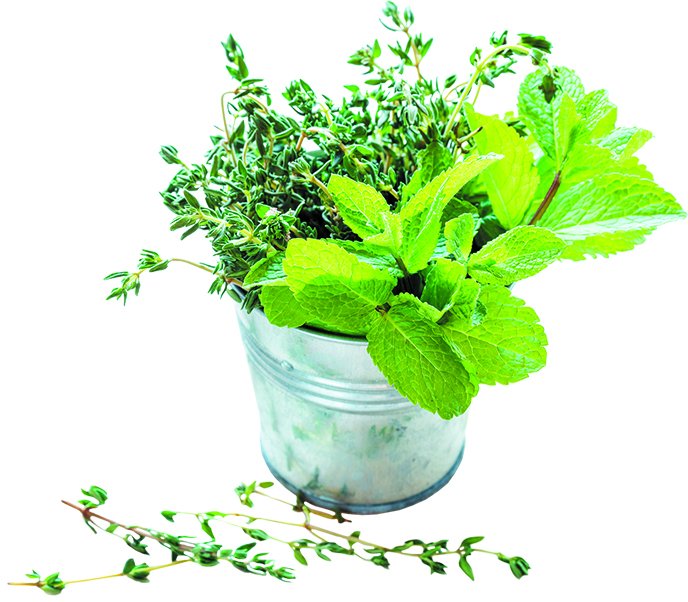
Dreamstime.com
Thyme:
It has an understated flavor with hints of cloves, mint and/or pine. Its subtlety makes it one of the most useful and versatile herbs in the kitchen.
Try it in: Broth, chicken soup, beef stew, beans and lentils. Also use it as a rub for chicken, turkey or lean pork, such as pork tenderloin.
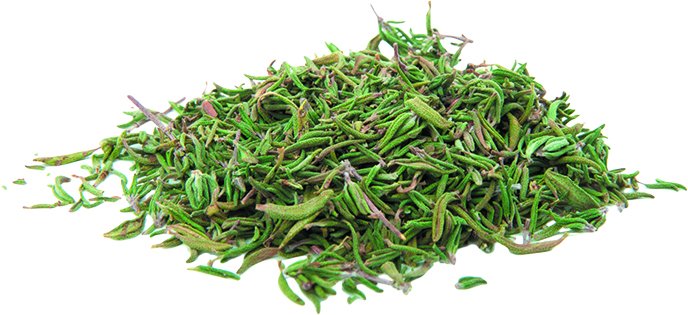
Dreamstime.com
Oregano: An aromatic herb, it is peppery with pungent notes, such as of lemon. It is considered the quintessential Italian herb, although it is also frequently used in Mexican and Mediterranean cooking.
Try it in: Greek salad dressings or marinades made with garlic, lemon juice and olive oil. Use it to perk up tomatoes and tomato sauces, too.
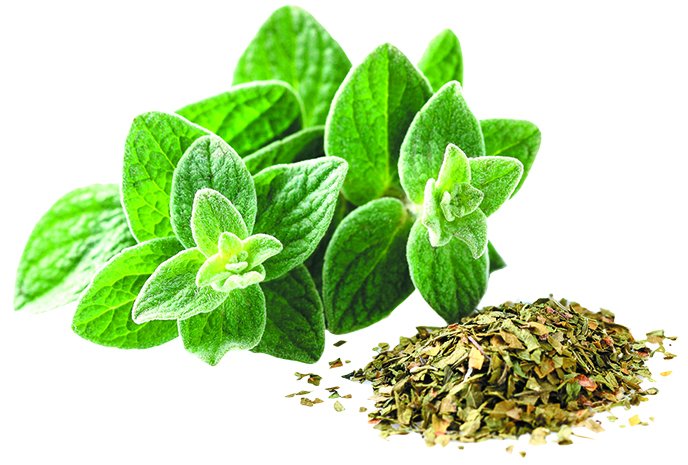
Dreamstime.com
Dill: The flavor of this feathery herb is of anise and lemon. For a real flavor treat, check your supermarket for freeze-dried dill (sometimes sold in the produce section) rather than traditionally-dried dill.
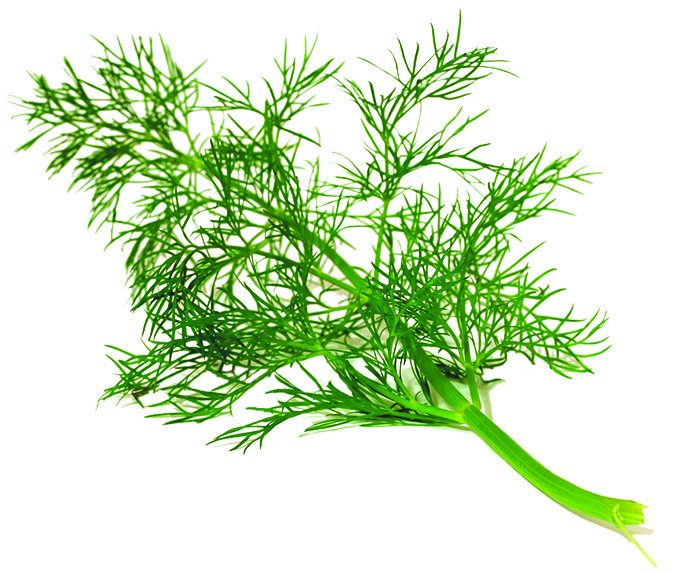
Dreamstime.com
Try it in: Grated carrot salad or sprinkled over steamed carrots, beets or cauliflower. Also use it to season fish and spruce up canned tuna, salmon or sardines. Tasty in white bean salads, lentil salads, chicken soup and mushroom-barley soup, too.
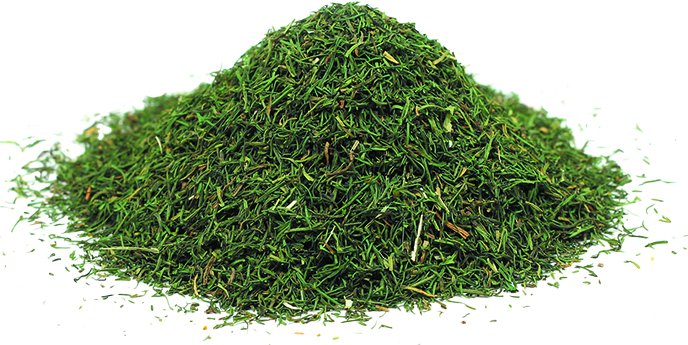
Dreamstime.com
Cumin: Its flavor is rich and earthy. Use it sparingly —a little goes a long way. It is widely used in both North African and Latin cuisines.
Try it in: All kinds of bean dishes, such as bean soups, chili and hummus dip made with black beans. Also use it as a spice rub for chicken, fish or lean pork.
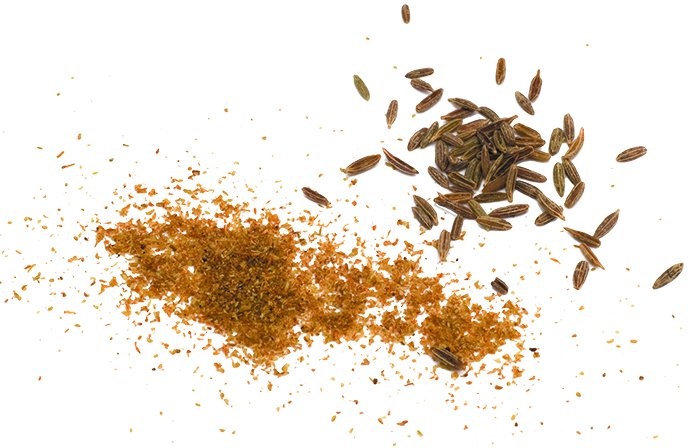
Dreamstime.com
Cinnamon: The naturally-sweet flavor of cinnamon enables you to reduce the amount of sugar in baked goods, desserts and even coffee. It also is a great addition to many savory dishes, as well as chutneys and other condiments.
Try it in: Spicy stews and meat sauces. Sprinkle it over sweet potatoes, winter squash, hot oatmeal and fruit desserts like baked apples and sliced oranges.
There are other basic seasonings you may want to start with, such as basil, bay leaves, black pepper, chili powder, curry powder, garlic powder, ground ginger, red chili pepper and rosemary. Your choices depend on your taste preferences. For more ideas on what seasonings to use with foods, visit nhlbi.nih.gov, and type “use herbs and spices instead of salt” into the search window.
If you’re not sure you’ll like a seasoning (or are uncertain how often you’ll use it), try to find it for sale in the bulk section of a store so you can just buy a small amount. The first time you add it to a dish, use just a little.
Storage Guidelines:
If you use an herb or spice in a recipe and find it didn’t add much flavor, it may just be old. The flavor of dried herbs and spices diminishes over time. If these seasonings have little or no aroma when you rub them between your fingers and lack flavor, it’s time to replace them.
To prolong shelf-life, store herbs and spices in tightly-closed jars away from heat, light and moisture (not above the stove or by a window). Mark the date of purchase on the containers when you buy them. Here’s a general guide for how long to store them:
– Herbs (such as thyme): 1-3 years
– Ground spices (such as ground red pepper): 2-3 years.
– Whole spices (such as cinnamon sticks): 3-4 years
– Seasoning blends (such as Italian seasoning): 1-2 years
– Extracts (such as lemon extract): 4 years (Except vanilla extract, which lasts indefinitely.)
Preserving Fresh Herbs:
Fresh herbs are pricier and generally last a week or less. Most fresh herbs can be stored wrapped in a paper towel to absorb moisture and placed in an open plastic bag in the refrigerator. Herbs such as parsley and dill can be stored with the stems in water in a glass jar and a plastic bag loosely covering the top. Change water every two days.
If you can’t use fresh herbs before they start to deteriorate, you can either dry them or freeze them. Drying herbs works better for those that have woody (rather than soft) stems and tough, hardy leaves. Examples are thyme, oregano and rosemary. Herbs with soft leaves and stems tend to lose significant flavor when dried. Examples are parsley and basil. So, it’s better to freeze these, as explained in this section. Mint, although soft-stemmed, retains its flavor well whether dried or frozen.
A traditional way to dry herbs is hanging. To try this: First rinse herbs then pat dry and remove any discolored leaves. Tie herbs in a small bunch, such as with a twist-tie (which you can adjust as they dry), and put the stems through the base of a small paper bag to protect herbs from light and dust. Hang herbs by the stems (attaching them to a wire clothes hanger works well) for a week to ten days until the leaves are brittle. Remove leaves from stems and store in an air-tight jar.
Jamieson finds it easy to dry herbs in the microwave. To try this: Wash and thoroughly dry herbs, then strip leaves from stems. Spread leaves – no more than 1 or 2 cups at a time – between two sheets of plain white paper towels on a microwave-safe plate. (Note: Do not use recycled paper towels because they may contain metal scraps, which can arc and cause sparks in the microwave.) Microwave herbs on high power for 1 minute. Check herbs and continue microwaving in 20-second bursts until herbs crumble easily between your fingertips.
To freeze fresh herbs, rinse and chop them, and then put them in an ice cube tray, adding boiling water to each “cube.” Once the cubes have frozen, transfer them to plastic bags marked with the date and name of what’s inside. The herbs will stay fragrant in the freezer for at least a few months and can be added to soups and sauces. For a fuss-free version of this, check the frozen-vegetable section of your supermarket – some sell herbs as small cubes that are ready to pop out of the freezer and into the cooking pot.
Whether fresh, dried or frozen, the most important thing in flavoring your foods with herbs and spices is just trying it. Follow recipes like our Roasted Salmon with North African Herb Sauce, until you’re comfortable experimenting on your own.

Dreamstime.com

Patsy Jamieson, the Health & Nutrition Letter’s recipe editor, answers common questions and shares practical tips for cooking with herbs and spices:
Q: What is a common mistake you find people make when cooking with herbs?
A: Adding herbs to a dish at the wrong time. My rule of thumb is to add sturdy herbs, such as thyme, rosemary and oregano at the start of cooking. Add delicate herbs like parsley, basil, dill and cilantro at the end of cooking. This is true whether the herbs are fresh or dried.
Q: Is there a way to enhance the flavor of spices?
A: Heat and fat bring out the flavor in spices. For example, when you make chili or curry, you usually start by sautéing onions and garlic in vegetable oil. Add the spices to the onions for the final minute or so, cooking and stirring until the spices become fragrant.
Q: What’s a strategy for making the most of fresh herbs?
A: Don’t discard the herb stems, like from parsley and cilantro. The stems (tied together with cooking twine to facilitate removal later) can be added to a soup or sauce at the beginning of cooking to infuse it with a subtle flavor.
Q: Are there certain herbs you like to add to leafy green salads to punch up the flavor?
A: In the summer, when fresh herbs are plentiful, try parsley, basil, dill, mint, tarragon, chervil, cilantro or chives in green salads. Throughout the year, you can add dried tarragon or dill to homemade vinaigrette dressings.
Q: What are your go-to herbs for flavoring a basic side dish of non-starchy vegetables, such as steamed broccoli or summer squash?
A: For broccoli, try oregano or marjoram (fresh or dried), especially when mixed with tomatoes. For summer squash, try basil, parsley or oregano.
Q: What’s an unusual way you like to use herbs?
A: Flavoring fruit desserts with herbs. Fresh basil pairs well with peaches. Mint is refreshing with strawberries, melons or fruit salads. Lemon-scented herbs like lemon thyme and lemon balm are delicious with summer berries. Rosemary enhances lemon sorbet and lemon-flavored baked goods.





















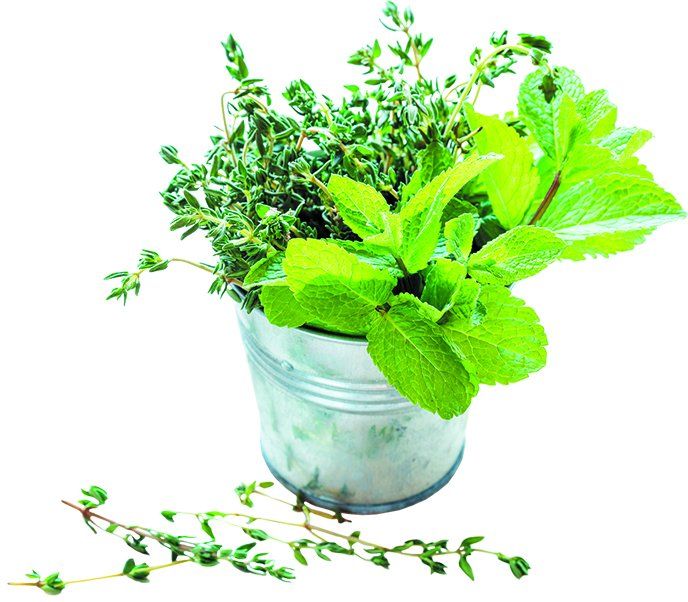
I love spice and new taste. Thanks for showing different spices for us to try!
Nancy
Thank you for this article – some real practical advice on using and preserving herbs. I’ll be saving it!
Kris
Thank you for this helpful review. I am extremely sensitive to salt but after 20 years on a very low salt diet, I do not miss it despite very heavy use in my younger years. We find that we have to cook from scratch to avoid the sneaky way salt, sugar, and other harmful additives are included in processed foods. I basically can not eat out as my blood pressure rapidly rises despite maximum doses of 3 antihypertensive medications.
It would be very helpful when citing studies if you would provide links either within the article to the cited studies, and/or provide the titles and authors of the articles and the journals in which they were published so your readers can access them more readily.